WTS provides peace of mind to book printers
Bookbinding is considered a very important operation. Sriraam Selvam finds out how Welbound Technical Services (WTS) goes about providing brand-independent, efficiency improvement programmes for the Indian book print and post-press industry
11 Sep 2018 | By Sriraam Selvam
Readers are turning back to the printed book as digital sales begin to decline, according to statistics from global publishers associations. During a recent roundtable meet in New Delhi where book print firm CEOs and publishers confabulated, one theme resonated. Physical books have become celebrated again as objects of beauty and publishers invest a lot of time and thought into making their print books beautiful, commissioning celebrated designers and illustrators and ensuring that print continues to be a desirable form of reading.
The buzz in the market is, print is resilient and publishers are regaining their confidence from the figures and continue to invest in print. Many marquee firms are investing in in-house binding as they look to grow their premium books and textbook products businesses. Others are revamping their bindery operations with a little bit of help from technical support like Welbound Technical Services (WTS) – Welbound’s brand independent post-print service initiative.
P Sajith, director at Impel – Welbound says, “In the past few months, our team has done some real high quality, high-end work. This has helped customers automate systems, improve safety, make the controls non-proprietary, open, supplier independent. All this has taken the customers (and even me) by surprise and delight.”
Case study one
Pragati Offset, Hyderabad
Pragati has always aimed to install the best technology. It has been the first mover with technology and kit, so that it can specifically produce a range of innovative award winning print jobs. The workhorses of the post-press operation, however, are no longer in the first flush of youth. The equipment lacked automation and safety features of the latest solutions (read very expensive) but in excellent condition mechanically.
Problem: The Kolbus hardcase book making machine (model BF524B) procured in 1992 had developed problem in its PLC unit. It was necessary to replace two cards in order to get the PLC running. The original system was ancient and prone to damages due to component failures or small voltage variations. The monitor used with this system was CRT black and white monitor, which had a blurry screen. The program was deployed with a keyboard. The instructions were provided in the program itself. Even if these were replaced, and new items procured from the OEM, they could run into problems in future due to an outdated and proprietary electronics system.
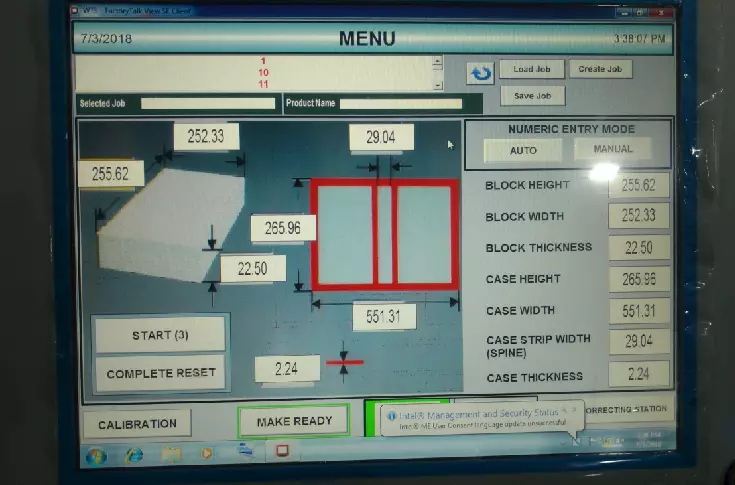
Main Screen
The WTS solution: Provide the latest PLC with touch screen interface and a new program. As a result, the kit could exploit all the features of the Kolbus binder. The idea was to eliminate outdated electronics and make it user and maintenance-friendly.
System integration: For starts, WTS opted for the latest Allen Bradley PLC system with a touch-screen monitor. Baban Khot, chief electronics engineer of WTS, says, “The old system was replaced entirely with compact size new PLC and touch panel. The system controls all size adjusting motors in the machine.” This meant, the operator would be able to change book sizes according to the requirement by entering book width, length and thickness of the book. Once the sizes are entered in the system and given command to change over, this system adjusts all motors one by one automatically suitable to book size. In short, the machine was automated with the latest, open architecture, open source system.
When queried what is the work required post tweak, Khot explains, “The size changing motors are required to be calibrated once in a while.” The WTS program provides procedures for this calibration. And so, the operator can store book data in the system for up to 20 books. Khot says, “He can recall any book and carry out changeover as and when it is needed. This ease of operation will help operator to change the job in minimum time.”
Khot highlights the fact that “All safety functions are carefully integrated into the system to avoid any damage to the system during job changeover. Also in case any motor or corresponding encoder is damaged, operator gets a warning message to check the faulty motor.” The new program responds to emergency stop and stops all functions. After resetting emergency stop switch, the size adjustment motors continue to operate. The new system enables operator to carry out all data entries from the screen directly eliminating keyboard usage.
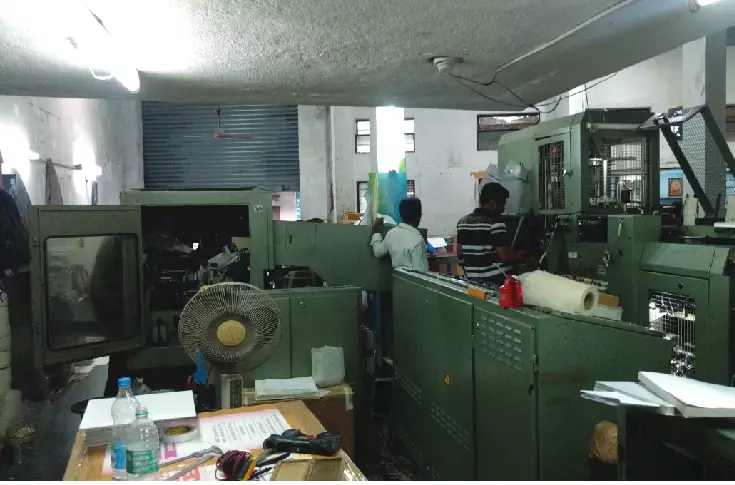
Calibration of motors is done once in 3 months
A win-win
While technical service contracts have been in the headlines, it’s often for all the wrong reasons. The Pragati-WTS partnership is a good example of a process that provides benefits not just to the business but to the employees as well.
The Kolbus hard cover binder is a robust machine and the machine at Pragati is excellent and will function trouble-free for the next several years. Plus the change of an outdated control system with a new system, has ensured that the machine controls can be revived, automated. Now the Kolbus can be utilised for book production for many more years. As a result, the operation has been made simpler, the WTS program helps the Pragati system to store jobs and recall them, and last.
As Khot says, “Because we put a proper structure in place, we get a far more effective response.”
Case study two
Balaji Books, Puduchery
Balaji Books as a company has been busy and successful, but somewhere they were aware that its maintenance practices were not serving it as well as they might. Indian book binderies have a typical “run to failure” approach. This means, production issues are addressed when something goes wrong. Otherwise the equipment is in operation as much as possible. This ‘repair reactively’ culture has been common across the sector. The WTS method says: the run-to-failure approach means downtime is unpredictable, uncontrollable and costly. If a bindery kaputted it had serious implications for productivity plus it threw schedules into confusion..
Two years ago, Balaji Books purchased a pre-owned Muller Martini binder model Panda with gatherer model 1531. The gatherer was running along with binder by a shaft connected to binder motor drive. It was not possible to get mis-feed and double sheet error on any of the gathering stations, as there was no control panel for the machine. Two compressors were connected separately and gatherer was driven by binder mechanically. It was not possible to stop gatherer of gathering from any specific station, no door switches or jam sensors worked in absence of control panel. In short, gatherer was running just mechanically along with the binder without any controls.
Balaji Books was seeking for solutions to avoid accidents, improve production. Plus they sought to utilise the machine features to the fullest extent. One solution was to add mechanical clutch from the OEM along with separate control panel to control clutch. But the cost of investment to implement this solution was prohibitive and not practical for a used machine.
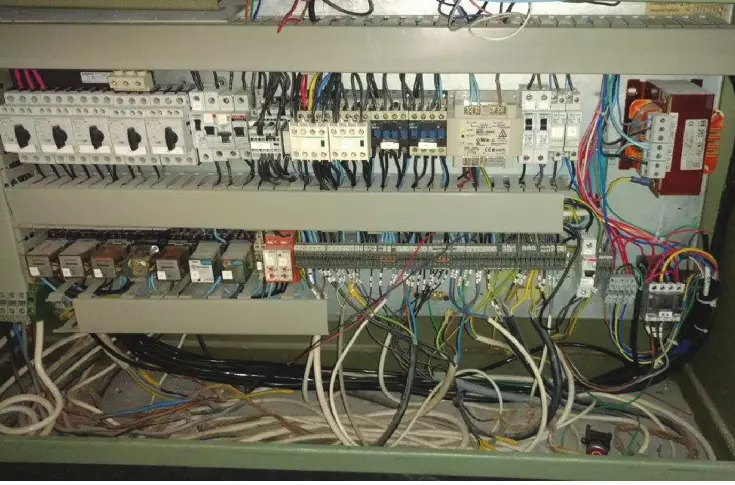
Added control circuit in binder panel
The WTS solution
The WTS team, lead by Arvind Kalasur, director operations, had long discussions with Balaji Books. The idea was to allow the operators to highlight problems on the machine that they would like to get addressed. Following this a detailed operator programme was developed. The senior operators drew up a list of tasks for each unit, measured how long each took to carry out and then created a schedule that balanced maximum productivity against expected workloads. Kalasur explains: “We spent a lot of time with the crews, pulling all the tasks together. The idea is to make them feel that they are a part of the process so that they don’t feel threatened by a third-party engineer.”
Finally, this translated into providing a solution to add a separate control panel that can be designed and constructed by WTS along with additional electronics to achieve desired results. This included,
Separate electronic drive for binder motor to replace variable pulley drive.
Separate motor and drive for gatherer
Various sensors, encoder, PLC’s and relay circuits to control various gatherer functions.
New control panel with control buttons
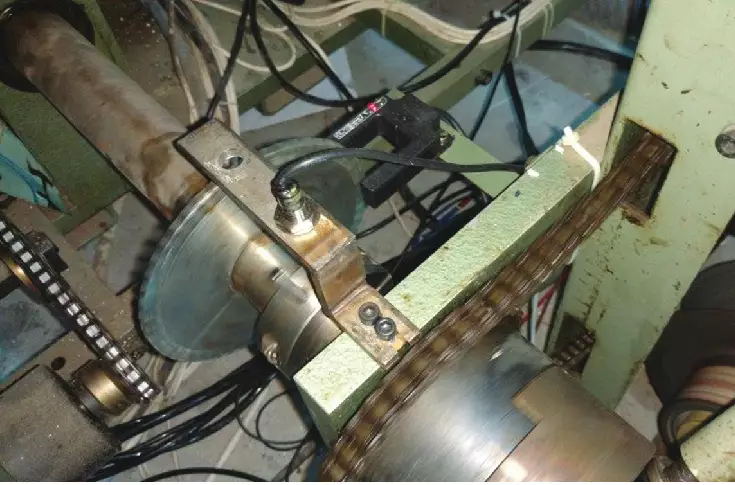
New binder position sensors
Project implementation
A new control panel at site with new drives and PLCs. The control panel was wired as per control logic and PLC’s programmed at site. The new motor was mechanically installed on gathering transfer element. The existing drive shaft was modified and fixed to new motor. Both binder as well as gatherer drive was commissioned and tested. The tooth wheels were installed on gatherer and binder shafts to get proper feedback signals. New encoder was mounted on binder gearbox with special mechanical attachments.
Once every component was in place and tuned, machine trials started. The machine was tested in many possible conditions. The new motor and drives fine-tuned for various speeds. Trials for different conditions. And finally trials with actual books at multiple speeds.
The benefits at Balaji
1 Binder can be run independently without forcing gatherer to run along with it
2 Gatherer can be run independently without binder
3. Binder and gatherer can be run together in speed synchronisation at different speeds
4. Gatherer can be controlled from binder panel
5. Binder jam signal can be detected on gatherer panel
6. All gatherer station controls are functioning again
All this meant, there was an immediate effect, resulting in an initial 8% improvement in uptime plus an increase in overall machine speed, thanks to improved machine condition.


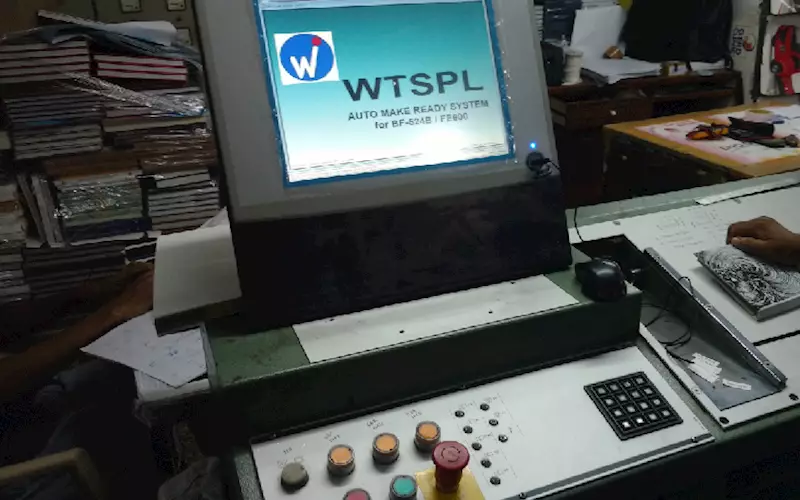








 See All
See All